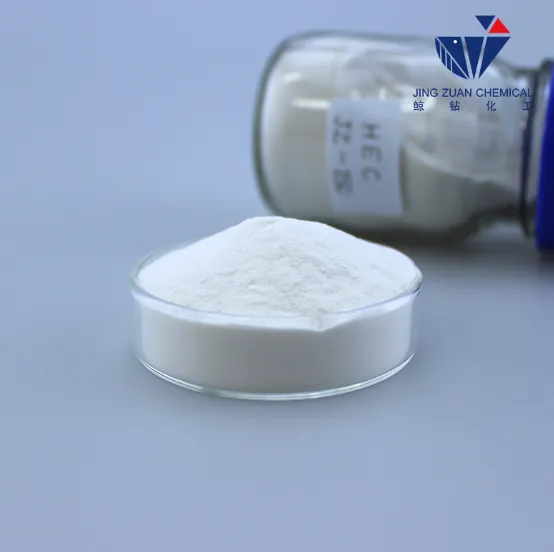
Juin . 19, 2025 15:03 Retour à la liste
Hydroxyethyl Cellulose Applications Driving Green Industrial Processes
The global shift toward sustainable manufacturing has intensified the demand for eco-friendly materials that align with green industrial processes. Among these, hydroxyethyl cellulose (HEC) stands out as a versatile, biodegradable polymer derived from cellulose. Its unique properties, such as water solubility, thickening ability, and compatibility with diverse formulations, make it indispensable in industries striving to reduce environmental impact. This article explores how hydroxyethyl cellulose is driving sustainability across sectors, focusing on its structure, pricing, and availability for large-scale procurement.

Hydroxyethyl Cellulose Structure and Its Role in Industrial Efficiency
The functional benefits of hydroxyethyl cellulose stem directly from its molecular architecture. Chemically, HEC is a cellulose ether modified by the introduction of hydroxyethyl groups (-CH2CH2OH) onto the cellulose backbone. This substitution enhances its water solubility while retaining the biodegradable nature of natural cellulose. The degree of substitution (DS) and molar substitution (MS) determine its viscosity, thermal stability, and compatibility with other chemicals.
In industrial applications, this structure enables HEC to act as a thickener, stabilizer, and film-forming agent. For example, in construction materials, HEC improves the workability of cement-based products by retaining water, reducing cracking, and enhancing adhesion. In water-based paints, its ability to form stable colloidal suspensions ensures even pigment distribution and minimizes waste. The tailored hydroxyethyl cellulose structure allows manufacturers to customize formulations for specific needs, such as high-temperature resistance in oilfield drilling fluids or rapid dissolution in pharmaceutical coatings.
Hydroxyethyl Cellulose Price and Cost-Effective Sustainability
The hydroxyethyl cellulose price is a critical factor for industries transitioning to greener practices without compromising profitability. As a bulk commodity, HEC pricing depends on raw material availability, production scale, and purity levels. Manufacturers investing in large quantities benefit from economies of scale, significantly lowering per-unit costs. Additionally, advancements in production technology have streamlined synthesis processes, reducing energy consumption and waste generation, further aligning cost efficiency with environmental goals.
Hydroxyethyl Cellulose for Sale in Large-Scale Industrial Applications
The availability of hydroxyethyl cellulose for sale in bulk quantities is pivotal for industries requiring consistent, high-volume supply. Leading manufacturers prioritize scalable production to meet global demand, ensuring uninterrupted delivery for sectors like construction, oilfield services, and coatings. Customizable packaging options, such as 25-kg bags or metric-ton pallets, cater to diverse industrial workflows.
For example, in the oil and gas industry, HEC is a key component of fracturing fluids, where its thickening properties enhance fluid viscosity to improve shale gas extraction efficiency. Bulk procurement ensures that operations remain cost-effective and environmentally compliant, as HEC-based fluids are less toxic than synthetic alternatives. Similarly, paper manufacturers utilize HEC as a coating additive to improve printability and reduce ink consumption, relying on steady hydroxyethyl cellulose for sale to maintain production continuity.
FAQs About Hydroxyethyl Cellulose
What industries commonly use hydroxyethyl cellulose?
Hydroxyethyl cellulose is widely used inconstruction, paints, oilfield operations and detergenrs. Its biodegradability and non-toxic nature make it ideal for applications requiring environmental compliance.
How does the hydroxyethyl cellulose structure affect performance?
The degree of hydroxyethyl substitution determines solubility, viscosity, and thermal stability. Higher substitution levels enhance water retention in construction materials, while lower levels optimize dissolution rates in coatings.
What factors influence hydroxyethyl cellulose price?
Key factors include raw material costs, production scale, purity, and order volume. Bulk purchasing typically reduces per-unit costs, making large-scale procurement economically advantageous.
Is hydroxyethyl cellulose for sale customizable for specific industrial needs?
Yes. Manufacturers offer tailored HEC grades with adjusted viscosity, particle size, and substitution levels to meet specialized requirements, such as high-temperature resistance or rapid hydration.
How does hydroxyethyl cellulose support green manufacturing?
As a plant-derived polymer, HEC is biodegradable and reduces reliance on synthetic, petroleum-based additives. Its use lowers carbon footprints and minimizes hazardous waste in industrial processes.
Hydroxyethyl cellulose is a cornerstone of green industrial innovation, offering a balance of performance, affordability, and environmental responsibility. Its adaptable structure, competitive pricing, and availability in bulk positions it as a critical enabler of sustainable manufacturing. By leveraging HEC’s unique properties, industries worldwide can achieve operational efficiency while advancing global sustainability goals. As demand grows, partnerships with trusted manufacturers ensure reliable access to high-quality hydroxyethyl cellulose, driving progress toward a greener future.
-
Versatile Hpmc Uses in Different Industries
NouvellesJun.19,2025
-
Redispersible Powder's Role in Enhancing Durability of Construction Products
NouvellesJun.19,2025
-
Hydroxyethyl Cellulose Applications Driving Green Industrial Processes
NouvellesJun.19,2025
-
Exploring Different Redispersible Polymer Powder
NouvellesJun.19,2025
-
Choosing the Right Mortar Bonding Agent
NouvellesJun.19,2025
-
Applications and Significance of China Hpmc in Modern Industries
NouvellesJun.19,2025







